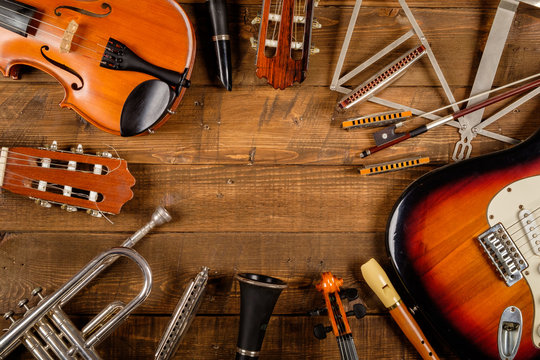Embarking on the journey of learning a musical instrument is a thrilling and fulfilling endeavor. Whether you’ve always dreamt of strumming chords on a guitar, tickling the ivories of a piano, or keeping the beat on drums, this beginner’s guide will provide you with essential tips and guidance to kickstart your musical journey.
Choosing the Right Instrument
The first step in your musical journey is choosing the right instrument that resonates with your interests and aspirations. Consider factors such as the type of music you enjoy, your personal preferences, and the availability of resources for learning your chosen instrument.
- Guitar Electric/Acoustic: Versatile and popular, the guitar is an excellent choice for beginners interested in a wide range of musical genres, from rock and pop to folk and blues.
- Piano/Keyboard: With its rich sound and expressive capabilities, the piano offers a solid foundation for learning music theory and is ideal for those interested in classical, jazz, or contemporary music.
- Drums: As the backbone of any band or ensemble, learning to play the drums can be incredibly rewarding for rhythm enthusiasts and those who enjoy the energy of rock, jazz, or funk music.
- Other Instruments: Explore a variety of instruments such as bass guitar, ukulele, violin, or saxophone based on your interests and musical goals.
Setting Realistic Goals
Learning a musical instrument is a journey that requires dedication, patience, and practice. Set realistic goals for yourself, whether it’s mastering a new chord progression, learning to play a favorite song, or improving your technique over time. Celebrate your progress along the way and stay motivated by challenging yourself with new goals as you advance.
Finding Quality Resources
Invest in quality learning resources to support your musical journey and provide you with the guidance you need to succeed.
- Online Lessons: Explore online platforms and tutorials tailored to beginners, offering structured lessons, video demonstrations, and interactive exercises.
- In-Person Instruction: Consider taking lessons from a qualified instructor who can provide personalized feedback, guidance, and accountability.
- Books and Instructional Materials: Supplement your learning with beginner-friendly books, sheet music, and instructional materials to reinforce concepts and techniques.
Practicing Effectively
Consistent practice is essential for mastering any musical instrument. Develop a practice routine that fits into your schedule and allows you to focus on different aspects of your playing, such as scales, exercises, repertoire, and improvisation. Practice with purpose, paying attention to technique, rhythm, and expression, and don’t be afraid to make mistakes—they’re an essential part of the learning process.
Seeking Inspiration and Support
Stay inspired and motivated on your musical journey by immersing yourself in music that inspires you, attending live performances, and connecting with fellow musicians and learners. Join online communities, forums, or local music groups to share your progress, seek advice, and collaborate with others who share your passion for music.
Conclusion
Learning a musical instrument is a rewarding and transformative experience that offers countless opportunities for creativity, self-expression, and personal growth. By choosing the right instrument, setting realistic goals, finding quality resources, practicing effectively, and seeking inspiration and support, you can embark on a fulfilling musical journey that will enrich your life for years to come.
So, what are you waiting for? Pick up your instrument of choice, and let the music begin!












